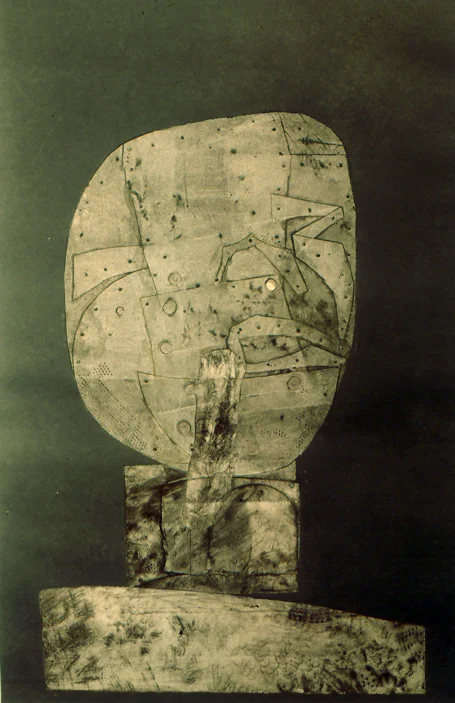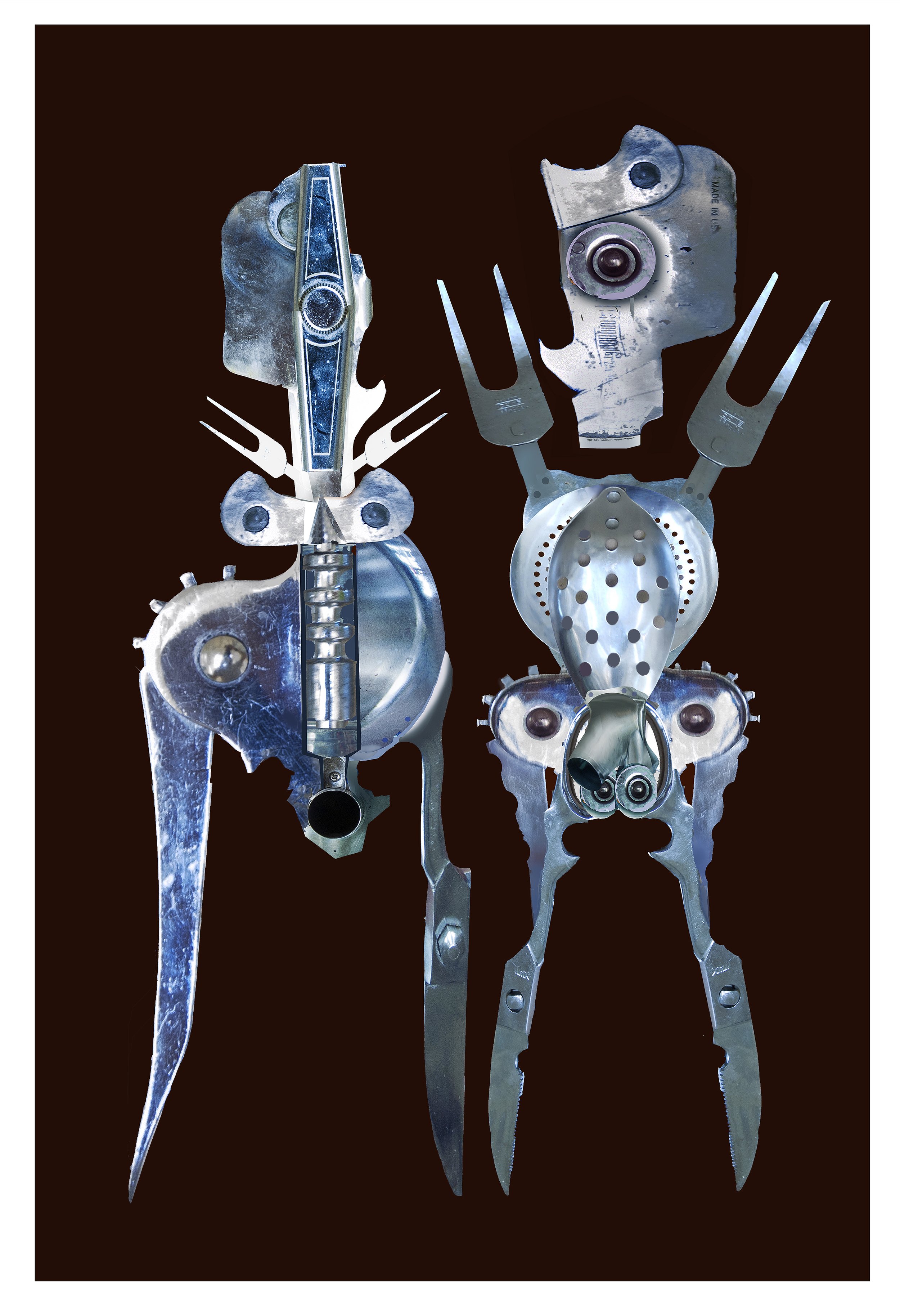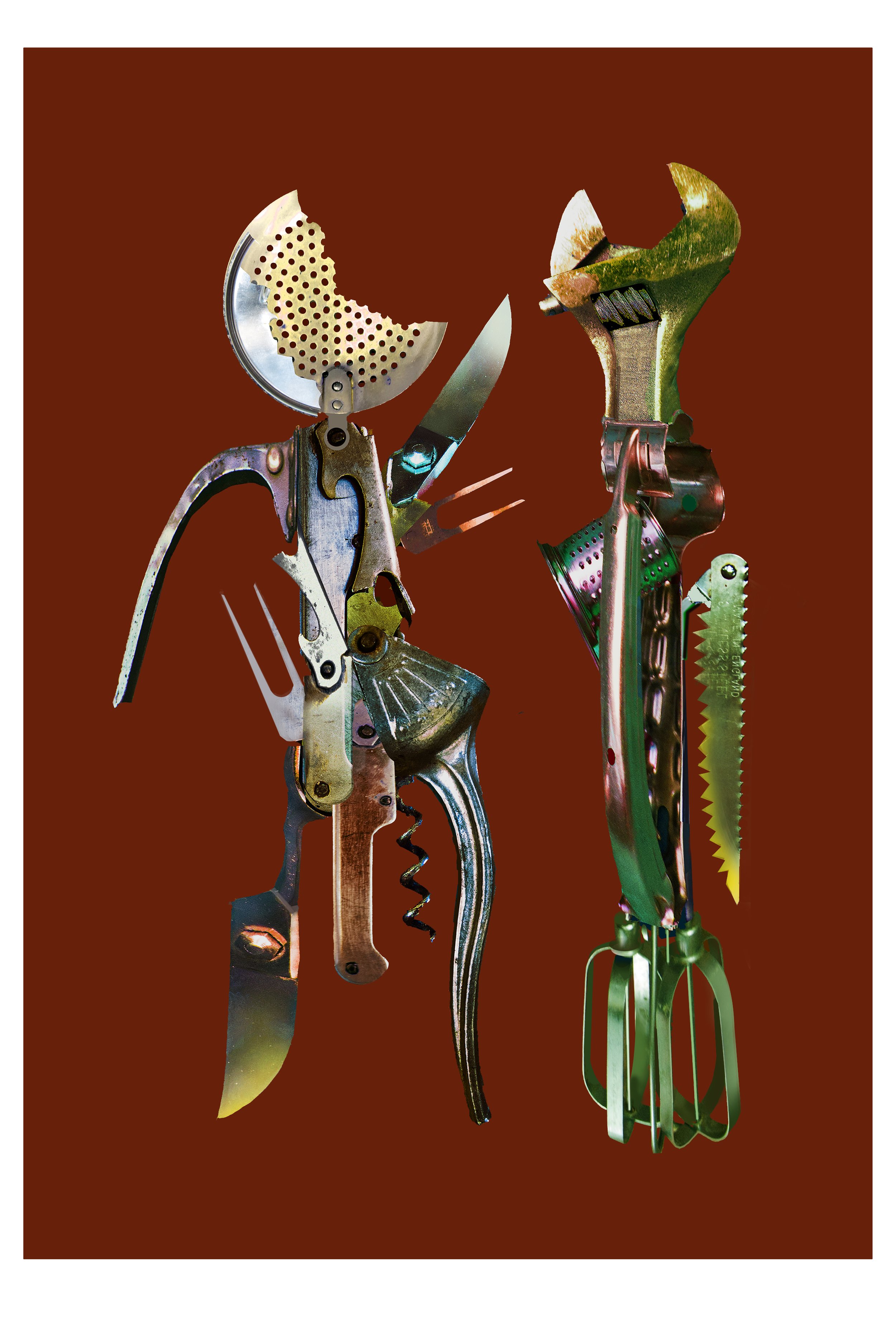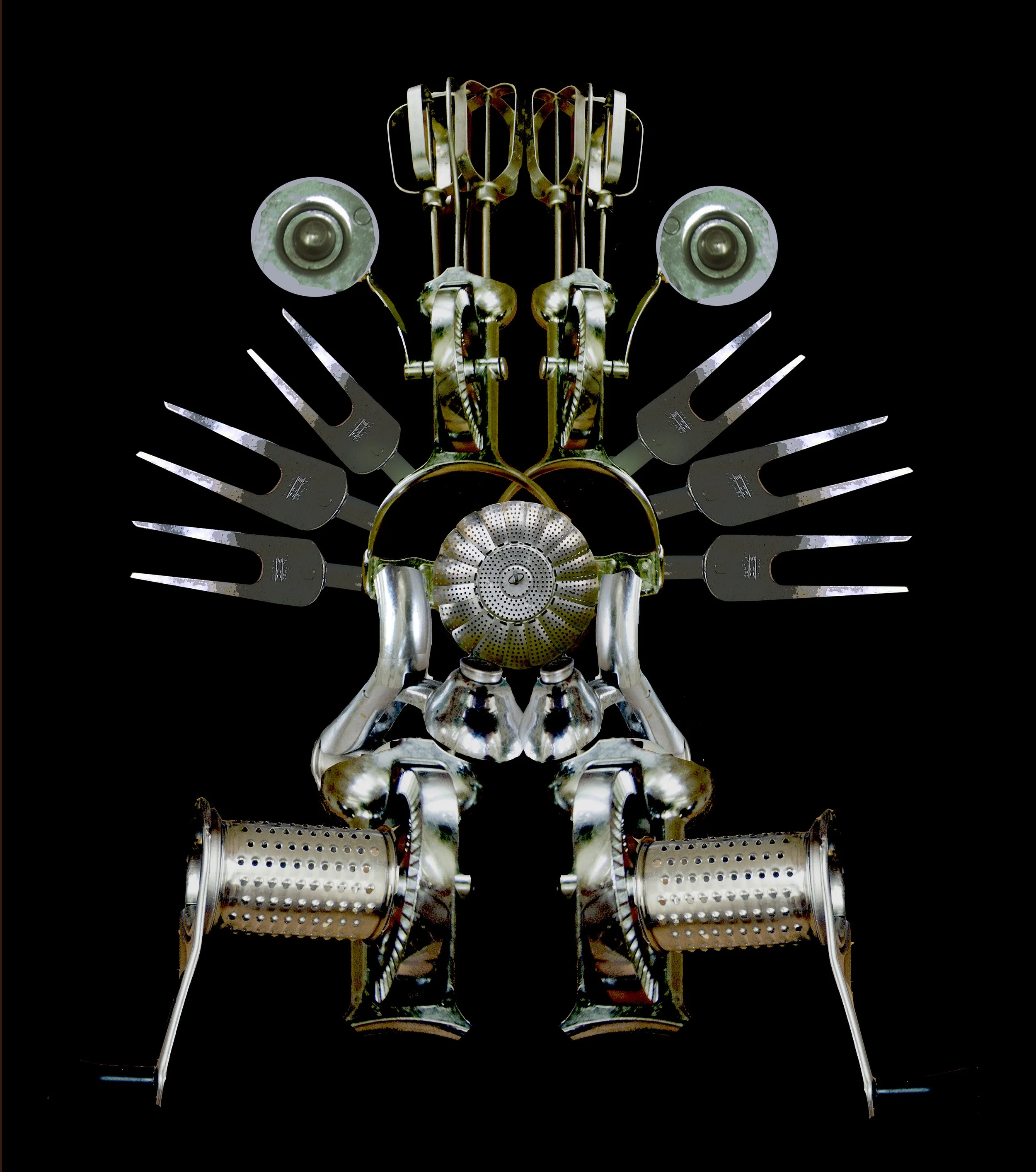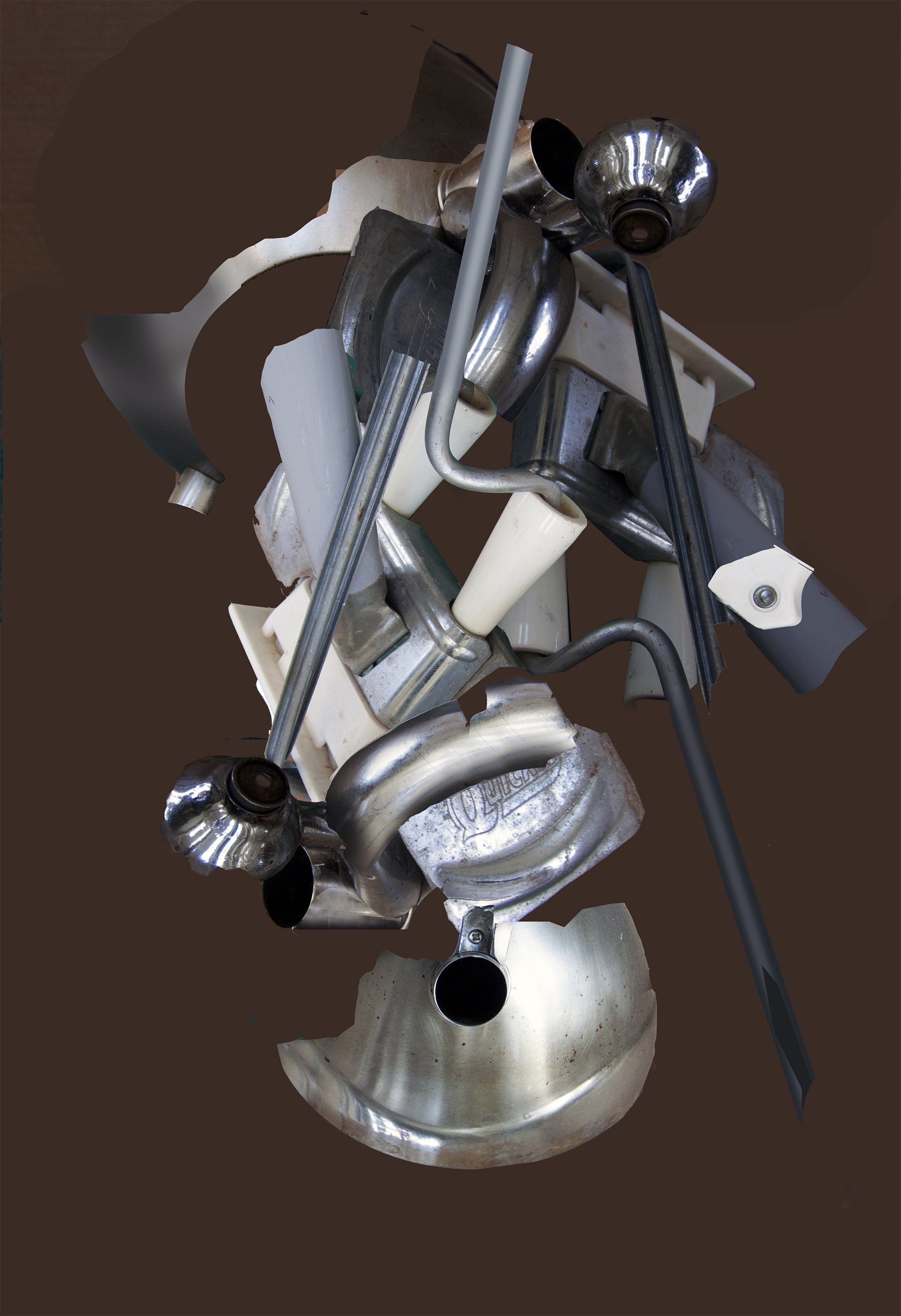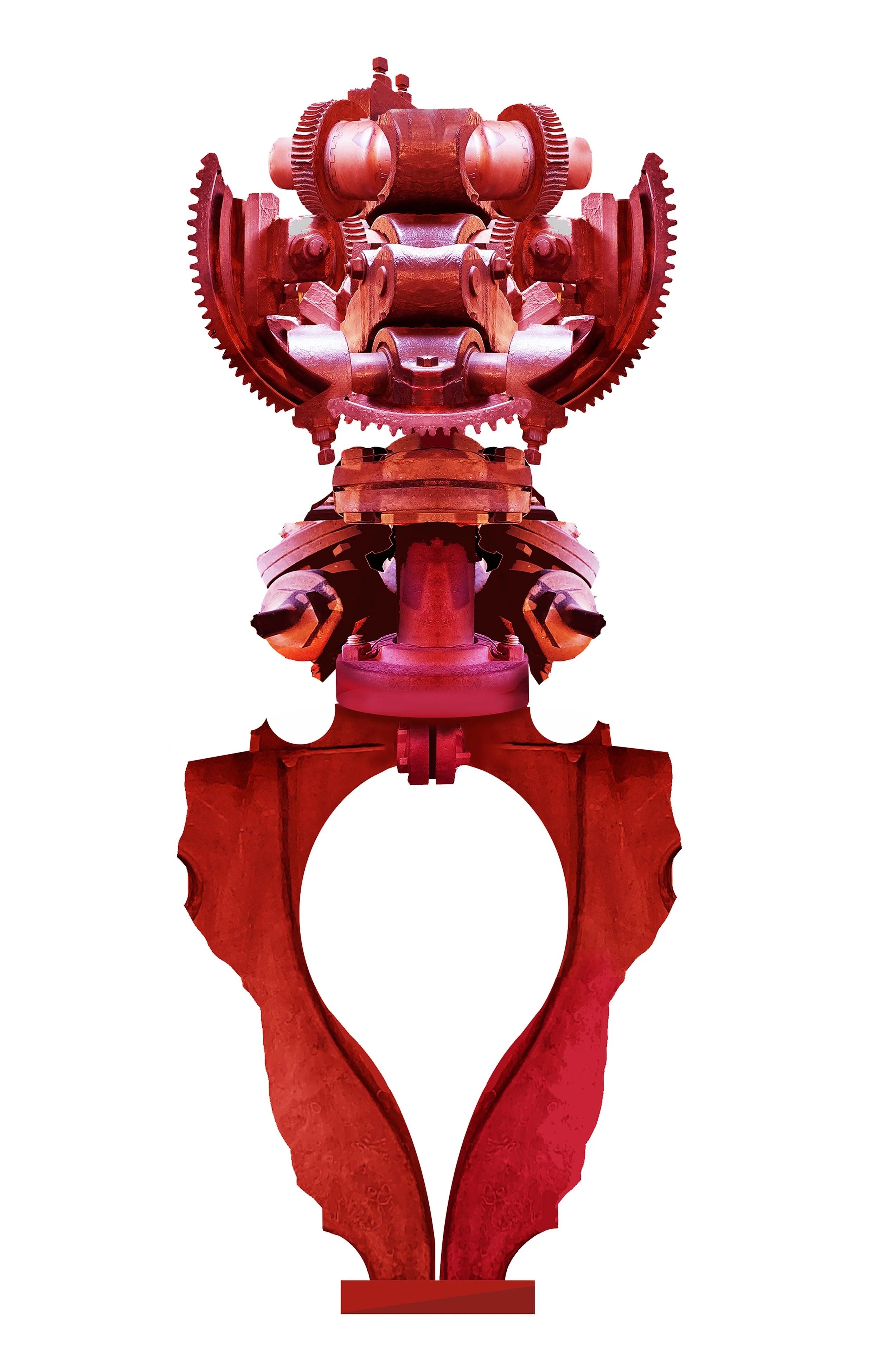Background of the Collagraph images
In 1993 I started a series of figurative Collagraph prints. The Collagraph plate was fabricated out of sheet aluminum. It had been cut, stamped and embossed, distressed, riveted, stitched and stapled to form an overall image . Inked impressions were taken from this plate and stand either as unique impressions as in Personage #5 , Head, Reversed Head and Ghost Head (the Collagraph plate was reversed and printed) , Personage #2 and Personage #6. Other impressions were cut apart and recombined and used as a basis for further development as in Personage #6, Can Head and Personage with Horn, Minotaur. In " Can Head", inked impressions were taken of common street debris and collaged onto a unique impression. The very physical act of distressing the aluminum and forming the Collagraph plate that would eventually be inked and from it, a print lifted, seemed in away to produce the foreboding images that were still a part of me. The images were dark, as if I were uncovering a dark mystery or persona . The intrigue has always been in the act of uncovering and freeing the images suggested by debris scattered, embedded in asphalt and the forces of compression that act upon it. the images were always figurative, always from a dark place. They are the dark images made visible, a personal mythology uncovered, a persona representation if you will, of self. Jungian associations that seem to lurk just beneath the surface of consciousness.
I have always been intrigued by the images that I see when I view debris that I find scattered about the street or embedded in the asphalt, as well as the forces of compression that act upon them. The images almost always become figurative for me.
Early constructions below (1986), which eventually led to the collagraphs, represent a constructivist philosophy. A simple and most direct approach utilizing cardboard as a preliminary material that facilitates spontaneity of construction and establishes surface considerations. ( the material can be cut, scored and structurally folded; torn exposing the plys producing textured surfaces; laminated, bonded and riveted) this establishes a visual dialogue between the seemingly random cut and torn shapes and the structural disciplines that develop with each piece. The consideration of fully realized works in permanent materials expands the potential, i.e., direct burn out casting, laminating, casting of component sections, galvanizing, scouring, abrading, electrolyte-plating, acid resists.
The last 12 images: Jasper Johns: “Take an object, Do something to it, to something else to it, do something else to it”. Summer, 2022. At a loss for subject matter I took the ordinary objects around our home, you know, the everyday things we all use, cooking utensils, things that were broken, waiting to be thrown out and photographed each as a digital image, imported each image in Photo Shop as a separate file. These were the everyday objects of our lives. Nothing special. The images, some whole some altered were composed in Photo Shop in a separate file to be worked on, altered, added to combined with others, put through filters, contrast adjusted. The first image, #1, are of objects that were just haphazardly placed in a pile., #2, objects were altered and placed in a composition, #3, Broken Things, an ordinary teapot , the image taken apart in Photoshop and arranged in a composition, the subtext /destruction.













